- Home
- Lawrence Block
Versatile Ladies: the bisexual option (John Warren Wells on Sexual Behavior)
Versatile Ladies: the bisexual option (John Warren Wells on Sexual Behavior) Read online
Table of Contents
* * *
ONE: Dimension Of Female Bi-Sexuality
TWO: “You Don’t Lose Your Taste For It”
THREE: “Fit To Be Tied”
FOUR: “Just Looking For Mommy and Daddy”
FIVE: “All Of A Sudden I Was A Lesbian”
SIX: “Swinging Made Everything Easy”
SEVEN: “Why Not A Book On Bi Men?”
About The Author
Excerpt: Sex Without Strings
Versatile Ladies:
Women Who Swing Both Ways
John Warren Wells
Lawrence Block
* * *
copyright © 1971, 2012, Lawrence Block
All Rights Reserved
ONE:
Dimension Of Female Bi-Sexuality
“When we first began to get into swinging, our whole orientation was rather innocent. By this I mean that our concept of swinging was limited to the one fundamental idea of mate-swapping. That was what we thought swinging was about—you met with another couple or with a group of couples, you paired off and went to separate houses or rooms, and you had sex.
“Variety was a big appeal, but it was all the idea of a variety of partners. You could enjoy sex with different partners without sneaking around or cheating. In fact the whole thing became a part of the marriage instead of an extramarital thing, in that you went into it together and discussed it and all . . .
“But neither of us ever thought in terms of a variety of acts. Of course we expected to learn new things with different partners, that was only to be expected, but that was as far as our minds went. Essentially we expected to do basically the same things with these other partners that we did with each other. Group sex was something we had not really contemplated. Our image of group sex was simply that a group got together and paired off. The first time we switched partners and made it all in the same room together, I remember it was something of a shock. It was tremendously exciting, naturally. It added a whole new dimension to the experience. Nevertheless, it was a shock.
“More than that, neither of us ever considered the possibility that there would be any homosexual relations involved. This may be hard to believe when you realize that we had read quite a few books on swapping. And in these books absolutely everything happened—group sex, homosexual relations, intercourse with animals, absolutely everything anyone could imagine. But the thing was that these books were obviously nothing but fantasy. They were novels, and there would be long drawn-out descriptions of sexual relations that couldn’t have been more detailed, and absolutely mindless character motivation and unbelievable dialogue, and we just thought of these books as the pornography they obviously were and didn’t take them seriously as a description of the swinging scene. They occasionally turned us on and I suppose in certain ways they made us more amenable to swinging, but neither my husband nor I thought that, just because these cardboard characters in these tacky books did thus and so with each other, that actual people in real life would behave that way.
“Well, you live and you learn. Just because the books rendered the whole thing so implausibly didn’t mean that people didn’t perform all of the acts that the books so elaborately described. And just because the people in the books were nothing like us didn’t mean that we didn’t find ourselves duplicating their behavior to a surprising degree. To make a long story short, we found out we liked group sex, and I found out I liked making love to another woman. In fact I can hardly envision swinging nowadays without lesbian relationships. The one is part and parcel of the other.
“I suppose it’s possible to be a swinger, to be really into it, and to avoid this. But it’s damned rare. It really is. I don’t know what the statistics would be. There’s a new book out that I haven’t read yet, a hardcover book on swinging by some professor, and in the advertisements there’s something to the effect that ninety-two percent of the wives who get into swinging also get into homosexuality. Or bisexuality, whatever you want to call it.
“Ninety-two percent is as reasonable a figure as any other, I guess. As far as I’m concerned, what it means is this—ninety-two percent of the wives are into swinging with other women, and the other eight percent haven’t gotten around to it yet. That’s what it really means, because when we meet a girl who isn’t ready for it it’s almost invariably a case of her and her husband being new to swinging. In fact what a girl will say in those circumstances isn’t that she doesn’t dig making love with other women but that she’s not ready for it yet. As if she already accepts the fact that sooner or later it’s going to be an okay scene for her.
“The way I’ve come to see it, and a couple of years ago I never would have believed I’d be saying anything like this, is that all women are bisexual. All of them. One hundred percent of women are bisexual, in swinging or out of it. The only thing is that not all of them realize it . . .”
• • •
All women are bisexual.
If this is so, they are rather like Orwell’s creatures in Animal Farm, where all animals were equal but some were more equal than others. All women are bisexual, but some are more bisexual than others. Some are aware of it and acting on it; others are not.
Every day, more women are finding out.
For the past decade, I have spent a major portion of my time as a close observer of the American sexual underground. Occasionally I have suspected that a close long-term association with mate-swappers, swingers, or what have you, gives one a somewhat unrealistic perspective of contemporary sexual behavior. In a sense, generalizations on this theme based on observations of the sexual underground are like generalizations about the American social structure based on observations of life in Southern California. But a continuation of the analogy is instructive. Southern California, however one feels about it (and one can hardly avoid having ambivalent feelings about the place), does show us in a great many ways what the rest of America is going to look like in ten or twenty or thirty years time. And the sexual underground, the swingers, very definitely represent a direction which is being and will be taken by an ever increasing number of Americans . . . however one feels about it, and however ambivalent one’s feelings are likely to be.
This last is an important point. A decade ago, even five years ago, I was considerably less inclined to take this position. At that time one could as easily argue that swinging in its sundry forms was a passing fad, important to study and understand for various reasons but unlikely to have any lasting impact on the American socio-sexual scene. One could regard the wife-swappers (a term now lamented as an example of the worst sort of male chauvinism, but unequivocally accepted then) as on a par with the hula hoop and the Twist. In a larger sense, one could explain the sexual underground as an understandable reaction to earlier extremes of native American puritanism facilitated by various liberating social forces unleashed after the Second World War. The whole phenomenon could be viewed as cyclical, with a swing toward conventional morality ultimately likely to counterbalance all of it.
Well, swinging is now ten years older—as are we all—and what seemed logical then seems less logical now. Not only has there been no countertrend but there has not been even the beginning of a countertrend, nor has swinging ceased its constant pattern of acceleration. The sexual underground grows ever larger and ever more vocal.
I would hesitate to predict that, in a greater or lesser period of time, what is now the sexual underground will become the sexual overground—i.e., that there wi
ll be more people engaged in swinging than not. Yet I would be equally hesitant to predict that this will not ultimately be the case. One cannot fail to acknowledge the possibility.
Some months ago, I appeared on a Dayton radio program to discuss another book, The Wife-Swap Report. This particular book dealt with one couple whom I was privileged to interview in great depth over a period of several months. It had seemed worthwhile to me to abandon in that instance the usual pattern of dealing with eight or ten cases in a single book so that I could instead examine one couple’s experiences at length and show the full role swinging had played in their lives and its effects upon them.
One result of this approach was that the ordinary lay reader, well-insulated from the sexual underground, was able to see a pair of swingers very much as people, with full human dimensions and rather typical human problems. The radio program’s host, Ted Ryan, commented on this in a pre-program interview, and asked at the time if this whole phenomenon of swinging, with which he was manifestly unfamiliar, could possibly exist in a town like Dayton.
I told him it could and did. I told him further that I would be enormously surprised if the program did not draw at least one telephone call from a self-acknowledged swinger in his audience.
The program consisted of perhaps ten minutes of straight interview and an hour during which listeners could call in with questions or comments. A large number of callers merely wanted certain information or desired to speak out strongly against swinging, usually accompanying their views with biblical references. But among the callers were two women who stated that their husbands were interested in swinging and had attempted to persuade them to give it a try. Both seemed about ready to take a tentative step in that direction. Then a third woman called to reply to the anti-swinging forces, announcing that she and her husband had had two years of a bad marriage, had joined a mate-swapping group, had been members of the group for the past seven years, and credited it with saving their marriage and enriching their lives. “Don’t knock it if you haven’t tried it,” she advised.
Almost immediately, after her call, a fourth woman called in to ask if there were any memberships open in the third women’s group, and how she might get in touch with her!
While one can draw several conclusions from all of this, the one I find most significant is perhaps the least obvious. And that is the fact that it would have been wholly inconceivable for that same radio program to have been aired five or ten years ago. I would never have been invited to discuss such a topic over a Midwestern radio station in the early afternoon had not our overall sexual attitudes undergone considerable change in the interim.
• • •
The foregoing may seem a digression from the theme of the present volume, which is of course a discussion and survey of female bisexualism in swinging. But the point is that the trend toward female bisexual relations is very much a part of the overall trend of swinging itself. And its rate of acceleration has been extraordinary.
When swinging first began to manifest itself to any appreciable extent, typical swinger behavior was very much that anticipated by the young wife quoted at the beginning of this chapter. For most couples, swinging consisted of nothing more than exchanging partners and retiring to private quarters for what was essentially a duplication of activities carried on in the nuptial bed. One did with this new partner what one did with one’s own husband or wife.
Gradually, swinging in general went through the same evolutionary process as this couple did in microcosm—proceeding a step at a time to sex in one room, to heterosexual group sex, and ultimately to group sex in which bisexual relations play a part.
An analysis of advertisements in a typical swingers’ magazine quickly shows just how much things have changed. An overwhelming majority of these ads specifically imply a distinct interest in female bisexuality. Ads in which a desire is expressed solely to swing with other couples will often stress that the wife is “bi-minded” or “versatile”—these being the two most popular euphemisms for bisexual at the moment. Even more ads aim at a meeting with couples or bi-minded single girls. Other ads, placed by a wife, aim at a meeting with other bi-minded women; a common phrase in such advertisements is “Husband participates if desired.” And other couples desire only to swing with single bi-minded women.
(This last preference, for a threesome or ménage à trois involving a man and two women, is so significant a behavioral trend that I devoted a book, Three Is Not A Crowd, specifically to it.)
Why female bisexualism? Why, in the permissive world of the swingers, is there such a predominance of lesbian relations as compared to male homosexual relations? And is this trend toward female bisexualism being echoed to any extent by a trend toward male bisexualism?
To answer the last question first, there is a definite trend toward male homosexual relations in the context of swinging. It has emerged more slowly and has reached dimensions nowhere near those of the parallel trend toward lesbianism, but its very real existence is undeniable. Male bisexual swingers are inclined to see themselves as the vanguard of the future. In a few years time, they say, male bisexualism will be every bit as common and unremarkable among swingers as female bisexualism is now. Barring any reversal of present trends, I suspect they are right.
At the present time, however, they are very much in the minority, and it is important to understand the very real reasons for this “sex gap.” One aid to understanding is the realization of the very great difference in society’s attitudes toward male and female homosexuals. Straight society has always had an infinitely greater fear of and contempt for the male homosexual. He has been subjected to police harassment and social ostracism to an extent far greater than that applied to the lesbian.
In a similar vein, our social norms are such that the non-sexual behavior of males is circumscribed in certain ways which do not affect women. It is considered perfectly acceptable, for example, for two unequivocally heterosexual women to walk down the street holding hands, to kiss upon meeting and parting, to hug each other, and so on. Men simply are not encouraged to behave in this fashion.
A young girl with an enthusiasm for sports or other typically male activities may be labeled a tomboy, but not in a distinctly pejorative sense. A young boy with a comparable inclination for dolls and cooking and sewing is labeled a sissy and scorned for his preferences. A girl in a shirt and pants is perfectly fashionable; a man in a dress is in drag, and is damned likely to be arrested.
Finally, our attitudes are such that male homosexuality is widely considered to be specifically unmanly, a negation of virility. A man is considered less of a man for making love to another man. This is very much less the case with women. While the deep-voiced, broad-shouldered butch lesbian is defeminized in our eyes by her manner, the ordinary lesbian is not; her enjoyment of sexual relations with members of her own sex does not in and of itself detract from her essential femininity.
This helps to explain why, outside of the sexual underground, females are more likely than males to be bisexual. Traditionally, males have been far more likely to be “either one thing or another”—either homosexual or heterosexual, as if the enjoyment of relations with one sex precludes the enjoyment of relations with the other sex. This has been noticeably less true with women.
An inquiry into this particular gulf between the sexes could go on at greater length than present space limitations permit. But we will return to this theme periodically in the pages which follow.
• • •
The interviews which follow have been selected not because they are typical, whatever precisely that may be construed to mean, but because I feel they are instructive. They show a variety of ways in which female bisexualism has manifested itself in the world of swingers, and show too a variety of effects which such behavior has had upon the persons involved.
The reader will note that I have kept my own remarks and observations to a minimum and have let the subjects of these interviews speak in their own voices. My own work h
as consisted in large measure merely of cutting extraneous material and streamlining the presentation in the interests of clarity and brevity. An interview frequently runs quite a few hours, and a verbatim rendering of such material would fill several volumes in and of itself.
With this stipulation, and with the obvious admonition that all names, places, and comparable details have been deliberately altered, the interviews are presented in the subjects’ own words, and the author, like the reader, is essentially no more than an interested listener.
• • •
In the pages to follow you will make the acquaintance of several very interesting women. All of them have recognized within themselves a capacity for the enjoyment of sexual relations with both men and women, and have accommodated themselves and their sexual life styles to their desires, in the face of society’s implicit insistence that such life styles are immoral, unnatural, and perverse. But for their willingness to share their ideas and experiences first with me and finally with you, the reader, this book could never have come into being.
TWO:
“You Don’t Lose Your Taste For It”
I never expected to have relations with another girl again. I thought it was over and done with. I had managed to build a particular compartment for it, a pigeon hole I could stuff it into and close it off. I thought of it as a particular part of growing up. Sort of a schoolgirl thing that I had, oh, outgrown. Put it in the drawer and close the drawer and forget about it.
Only I never completely forgot about it. It was always there, you know. Something that had happened and that had been vitally important in my life at the time and that I was now completely out of, but that I couldn’t really pretend had never happened.
At the time I had gone through this thing, thinking that I was a lesbian, worrying that I was a lesbian. Which is perfectly natural the way you’re conditioned to think in terms of names and labels and categories. You tend to think that being a lesbian is like being pregnant, you either are or you aren’t. And of course this simply isn’t true.

 Tanner on Ice
Tanner on Ice Hit Me
Hit Me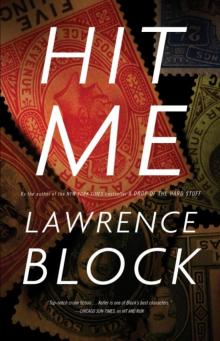 Hit and Run
Hit and Run Hope to Die
Hope to Die Two For Tanner
Two For Tanner Tanners Virgin
Tanners Virgin Dead Girl Blues
Dead Girl Blues One Night Stands and Lost Weekends
One Night Stands and Lost Weekends A Drop of the Hard Stuff
A Drop of the Hard Stuff The Canceled Czech
The Canceled Czech Even the Wicked
Even the Wicked Me Tanner, You Jane
Me Tanner, You Jane Quotidian Keller
Quotidian Keller Small Town
Small Town Tanners Tiger
Tanners Tiger A Walk Among the Tombstones
A Walk Among the Tombstones Tanners Twelve Swingers
Tanners Twelve Swingers Gym Rat & the Murder Club
Gym Rat & the Murder Club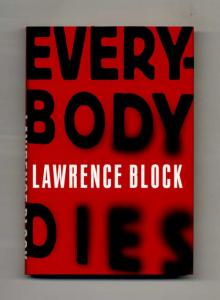 Everybody Dies
Everybody Dies The Thief Who Couldnt Sleep
The Thief Who Couldnt Sleep Hit Parade
Hit Parade The Devil Knows Youre Dead
The Devil Knows Youre Dead The Burglar in Short Order
The Burglar in Short Order A Long Line of Dead Men
A Long Line of Dead Men Keller's Homecoming
Keller's Homecoming Resume Speed
Resume Speed Keller's Adjustment
Keller's Adjustment Eight Million Ways to Die
Eight Million Ways to Die Time to Murder and Create
Time to Murder and Create Out on the Cutting Edge
Out on the Cutting Edge A Dance at the Slaughter House
A Dance at the Slaughter House In the Midst of Death
In the Midst of Death When the Sacred Ginmill Closes
When the Sacred Ginmill Closes You Could Call It Murder
You Could Call It Murder Keller on the Spot
Keller on the Spot A Ticket to the Boneyard
A Ticket to the Boneyard A Time to Scatter Stones
A Time to Scatter Stones Keller's Designated Hitter
Keller's Designated Hitter A Stab in the Dark
A Stab in the Dark Sins of the Fathers
Sins of the Fathers The Burglar in the Closet
The Burglar in the Closet Burglar Who Dropped In On Elvis
Burglar Who Dropped In On Elvis The Burglar Who Painted Like Mondrian
The Burglar Who Painted Like Mondrian The Girl With the Long Green Heart
The Girl With the Long Green Heart The Burglar Who Counted the Spoons (Bernie Rhodenbarr)
The Burglar Who Counted the Spoons (Bernie Rhodenbarr) Burglar Who Smelled Smoke
Burglar Who Smelled Smoke Rude Awakening (Kit Tolliver #2) (The Kit Tolliver Stories)
Rude Awakening (Kit Tolliver #2) (The Kit Tolliver Stories) Don't Get in the Car (Kit Tolliver #9) (The Kit Tolliver Stories)
Don't Get in the Car (Kit Tolliver #9) (The Kit Tolliver Stories) CH04 - The Topless Tulip Caper
CH04 - The Topless Tulip Caper You Can Call Me Lucky (Kit Tolliver #3) (The Kit Tolliver Stories)
You Can Call Me Lucky (Kit Tolliver #3) (The Kit Tolliver Stories) CH02 - Chip Harrison Scores Again
CH02 - Chip Harrison Scores Again Strangers on a Handball Court
Strangers on a Handball Court Cleveland in My Dreams
Cleveland in My Dreams Clean Slate (Kit Tolliver #4) (The Kit Tolliver Stories)
Clean Slate (Kit Tolliver #4) (The Kit Tolliver Stories) The Burglar Who Traded Ted Williams
The Burglar Who Traded Ted Williams Burglar on the Prowl
Burglar on the Prowl In For a Penny (A Story From the Dark Side)
In For a Penny (A Story From the Dark Side) Catch and Release Paperback
Catch and Release Paperback Ride A White Horse
Ride A White Horse No Score
No Score Looking for David (A Matthew Scudder Story Book 7)
Looking for David (A Matthew Scudder Story Book 7)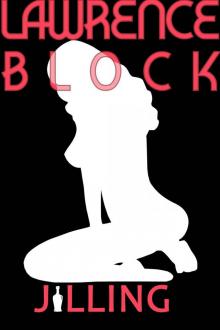 Jilling (Kit Tolliver #6) (The Kit Tolliver Stories)
Jilling (Kit Tolliver #6) (The Kit Tolliver Stories) Ariel
Ariel Enough Rope
Enough Rope Grifter's Game
Grifter's Game Canceled Czech
Canceled Czech Unfinished Business (Kit Tolliver #12) (The Kit Tolliver Stories)
Unfinished Business (Kit Tolliver #12) (The Kit Tolliver Stories) Thirty
Thirty The Burglar Who Thought He Was Bogart
The Burglar Who Thought He Was Bogart Make Out with Murder
Make Out with Murder One Last Night at Grogan's (A Matthew Scudder Story Book 11)
One Last Night at Grogan's (A Matthew Scudder Story Book 11) The Burglar on the Prowl
The Burglar on the Prowl Welcome to the Real World (A Story From the Dark Side)
Welcome to the Real World (A Story From the Dark Side) Keller 05 - Hit Me
Keller 05 - Hit Me Walk Among the Tombstones: A Matthew Scudder Crime Novel
Walk Among the Tombstones: A Matthew Scudder Crime Novel Ronald Rabbit Is a Dirty Old Man
Ronald Rabbit Is a Dirty Old Man The Burglar Who Studied Spinoza
The Burglar Who Studied Spinoza The Burglar Who Liked to Quote Kipling
The Burglar Who Liked to Quote Kipling Keller in Des Moines
Keller in Des Moines Hit List
Hit List The Dettweiler Solution
The Dettweiler Solution HCC 115 - Borderline
HCC 115 - Borderline A Drop of the Hard Stuff: A Matthew Scudder Novel
A Drop of the Hard Stuff: A Matthew Scudder Novel Step by Step
Step by Step The Girl With the Deep Blue Eyes
The Girl With the Deep Blue Eyes If You Can't Stand the Heat (Kit Tolliver #1) (The Kit Tolliver Stories)
If You Can't Stand the Heat (Kit Tolliver #1) (The Kit Tolliver Stories) The Topless Tulip Caper
The Topless Tulip Caper Dolly's Trash & Treasures (A Story From the Dark Side)
Dolly's Trash & Treasures (A Story From the Dark Side) The Triumph of Evil
The Triumph of Evil Fun with Brady and Angelica (Kit Tolliver #10 (The Kit Tolliver Stories)
Fun with Brady and Angelica (Kit Tolliver #10 (The Kit Tolliver Stories) Burglars Can't Be Choosers
Burglars Can't Be Choosers Who Knows Where It Goes (A Story From the Dark Side)
Who Knows Where It Goes (A Story From the Dark Side) Deadly Honeymoon
Deadly Honeymoon Like a Bone in the Throat (A Story From the Dark Side)
Like a Bone in the Throat (A Story From the Dark Side) A Chance to Get Even (A Story From the Dark Side)
A Chance to Get Even (A Story From the Dark Side) The Boy Who Disappeared Clouds
The Boy Who Disappeared Clouds Collecting Ackermans
Collecting Ackermans Waitress Wanted (Kit Tolliver #5) (The Kit Tolliver Stories)
Waitress Wanted (Kit Tolliver #5) (The Kit Tolliver Stories) One Thousand Dollars a Word
One Thousand Dollars a Word Even the Wicked: A Matthew Scudder Novel (Matthew Scudder Mysteries)
Even the Wicked: A Matthew Scudder Novel (Matthew Scudder Mysteries) Hit Man
Hit Man The Night and The Music
The Night and The Music Ehrengraf for the Defense
Ehrengraf for the Defense The Merciful Angel of Death (A Matthew Scudder Story Book 5)
The Merciful Angel of Death (A Matthew Scudder Story Book 5) The Burglar in the Rye
The Burglar in the Rye I Know How to Pick 'Em
I Know How to Pick 'Em Getting Off hcc-69
Getting Off hcc-69 Three in the Side Pocket (A Story From the Dark Side)
Three in the Side Pocket (A Story From the Dark Side) Let's Get Lost (A Matthew Scudder Story Book 8)
Let's Get Lost (A Matthew Scudder Story Book 8) Strange Are the Ways of Love
Strange Are the Ways of Love MOSTLY MURDER: Till Death: a mystery anthology
MOSTLY MURDER: Till Death: a mystery anthology Masters of Noir: Volume Four
Masters of Noir: Volume Four A Week as Andrea Benstock
A Week as Andrea Benstock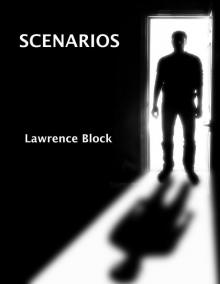 Scenarios (A Stoiry From the Dark Side)
Scenarios (A Stoiry From the Dark Side) The Sex Therapists: What They Can Do and How They Do It (John Warren Wells on Sexual Behavior Book 15)
The Sex Therapists: What They Can Do and How They Do It (John Warren Wells on Sexual Behavior Book 15)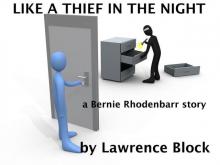 Like a Thief in the Night: a Bernie Rhodenbarr story
Like a Thief in the Night: a Bernie Rhodenbarr story A Diet of Treacle
A Diet of Treacle Community of Women
Community of Women Different Strokes: How I (Gulp!) Wrote, Directed, and Starred in an X-rated Movie (John Warren Wells on Sexual Behavior)
Different Strokes: How I (Gulp!) Wrote, Directed, and Starred in an X-rated Movie (John Warren Wells on Sexual Behavior) You Don't Even Feel It (A Story From the Dark Side)
You Don't Even Feel It (A Story From the Dark Side) Zeroing In (Kit Tolliver #11) (The Kit Tolliver Stories)
Zeroing In (Kit Tolliver #11) (The Kit Tolliver Stories) The Wife-Swap Report (John Warren Wells on Sexual Behavior)
The Wife-Swap Report (John Warren Wells on Sexual Behavior) Keller's Fedora (Kindle Single)
Keller's Fedora (Kindle Single) Speaking of Lust
Speaking of Lust Everybody Dies (Matthew Scudder)
Everybody Dies (Matthew Scudder) Defender of the Innocent: The Casebook of Martin Ehrengraf
Defender of the Innocent: The Casebook of Martin Ehrengraf After the First Death
After the First Death Writing the Novel
Writing the Novel How Far - a one-act stage play
How Far - a one-act stage play Chip Harrison Scores Again
Chip Harrison Scores Again The Topless Tulip Caper ch-4
The Topless Tulip Caper ch-4 The Crime of Our Lives
The Crime of Our Lives Killing Castro
Killing Castro The Trouble with Eden
The Trouble with Eden Nothing Short of Highway Robbery
Nothing Short of Highway Robbery Sin Hellcat
Sin Hellcat Getting Off: A Novel of Sex & Violence (Hard Case Crime)
Getting Off: A Novel of Sex & Violence (Hard Case Crime) Coward's Kiss
Coward's Kiss Alive in Shape and Color
Alive in Shape and Color Blow for Freedom
Blow for Freedom The New Sexual Underground: Crossing the Last Boundaries (John Warren Wells on Sexual Behavior Book 10)
The New Sexual Underground: Crossing the Last Boundaries (John Warren Wells on Sexual Behavior Book 10) April North
April North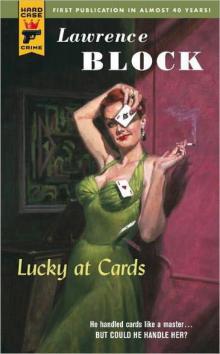 Lucky at Cards
Lucky at Cards One Night Stands; Lost weekends
One Night Stands; Lost weekends Sweet Little Hands (A Story From the Dark Side)
Sweet Little Hands (A Story From the Dark Side) Blood on Their Hands
Blood on Their Hands A Dance at the Slaughterhouse
A Dance at the Slaughterhouse Headaches and Bad Dreams (A Story From the Dark Side)
Headaches and Bad Dreams (A Story From the Dark Side) Keller's Therapy
Keller's Therapy The Specialists
The Specialists Hit and Run jk-4
Hit and Run jk-4 Threesome
Threesome Love at a Tender Age (John Warren Wells on Sexual Behavior)
Love at a Tender Age (John Warren Wells on Sexual Behavior) The Devil Knows You're Dead: A MATTHEW SCUDDER CRIME NOVEL
The Devil Knows You're Dead: A MATTHEW SCUDDER CRIME NOVEL Funny You Should Ask
Funny You Should Ask CH01 - No Score
CH01 - No Score Sex and the Stewardess (John Warren Wells on Sexual Behavior)
Sex and the Stewardess (John Warren Wells on Sexual Behavior) A Madwoman's Diary
A Madwoman's Diary When This Man Dies
When This Man Dies Sinner Man
Sinner Man Such Men Are Dangerous
Such Men Are Dangerous A Strange Kind of Love
A Strange Kind of Love Enough of Sorrow
Enough of Sorrow 69 Barrow Street
69 Barrow Street A Moment of Wrong Thinking (Matthew Scudder Mysteries Series Book 9)
A Moment of Wrong Thinking (Matthew Scudder Mysteries Series Book 9) Eight Million Ways to Die ms-5
Eight Million Ways to Die ms-5 Warm and Willing
Warm and Willing Mona
Mona In Sunlight or In Shadow
In Sunlight or In Shadow A Candle for the Bag Lady (Matthew Scudder Book 2)
A Candle for the Bag Lady (Matthew Scudder Book 2) Conjugal Rites (Kit Tolliver #7) (The Kit Tolliver Stories)
Conjugal Rites (Kit Tolliver #7) (The Kit Tolliver Stories) Speaking of Lust - the novella
Speaking of Lust - the novella Gigolo Johnny Wells
Gigolo Johnny Wells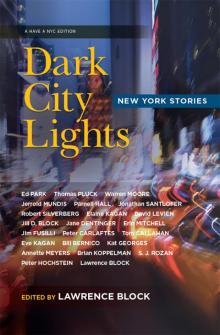 Dark City Lights
Dark City Lights Versatile Ladies: the bisexual option (John Warren Wells on Sexual Behavior)
Versatile Ladies: the bisexual option (John Warren Wells on Sexual Behavior) Passport to Peril
Passport to Peril The Taboo Breakers: Shock Troops of the Sexual Revolution (John Warren Wells on Sexual Behavior)
The Taboo Breakers: Shock Troops of the Sexual Revolution (John Warren Wells on Sexual Behavior) Lucky at Cards hcc-28
Lucky at Cards hcc-28 Campus Tramp
Campus Tramp 3 is Not a Crowd (John Warren Wells on Sexual Behavior)
3 is Not a Crowd (John Warren Wells on Sexual Behavior) Manhattan Noir
Manhattan Noir The Burglar in the Library
The Burglar in the Library Doing It! - Going Beyond the Sexual Revolution (John Warren Wells on Sexual Behavior Book 13)
Doing It! - Going Beyond the Sexual Revolution (John Warren Wells on Sexual Behavior Book 13) So Willing
So Willing The Burglar Who Traded Ted Williams br-6
The Burglar Who Traded Ted Williams br-6 Candy
Candy Sex Without Strings: A Handbook for Consenting Adults (John Warren Wells on Sexual Behavior)
Sex Without Strings: A Handbook for Consenting Adults (John Warren Wells on Sexual Behavior) The Devil Knows You're Dead: A MATTHEW SCUDDER CRIME NOVEL (Matthew Scudder Mysteries)
The Devil Knows You're Dead: A MATTHEW SCUDDER CRIME NOVEL (Matthew Scudder Mysteries) Manhattan Noir 2
Manhattan Noir 2 The Scoreless Thai (aka Two For Tanner)
The Scoreless Thai (aka Two For Tanner)